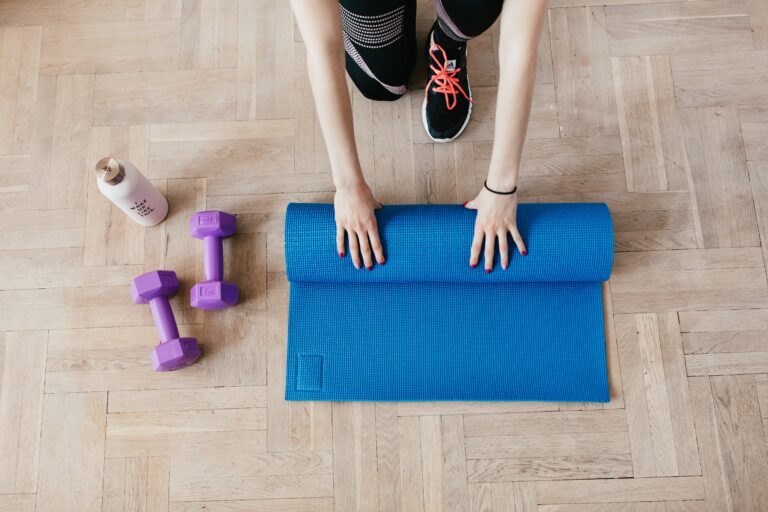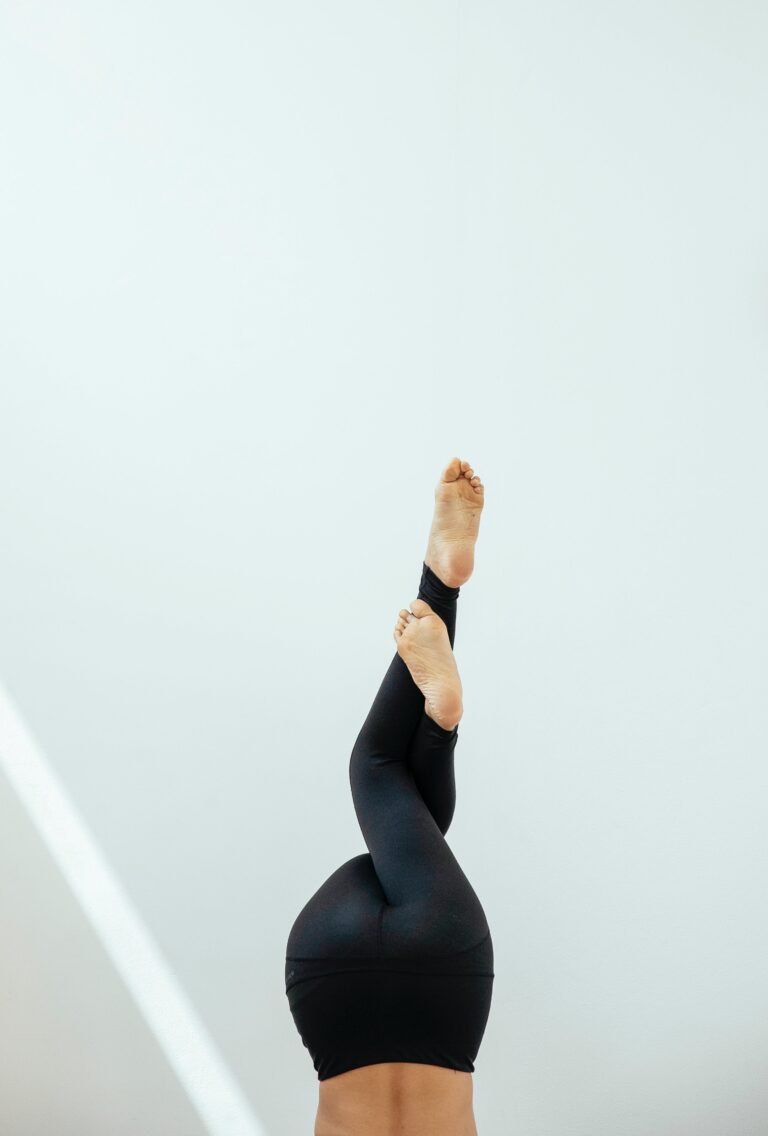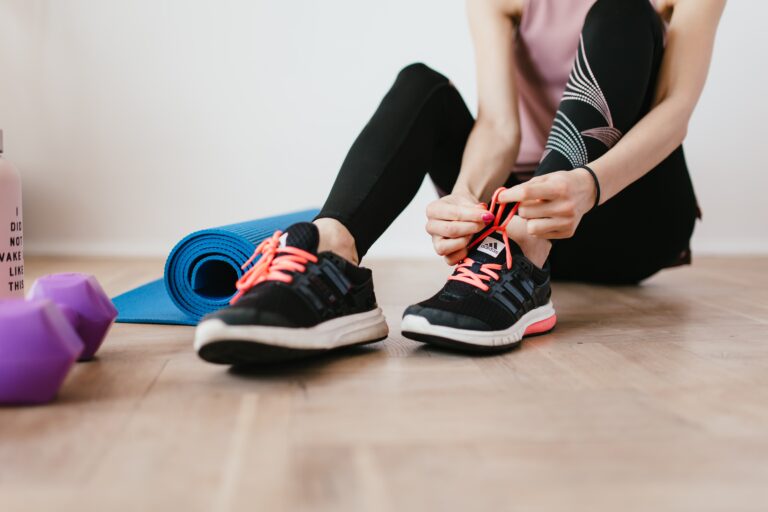
Outline
Week 1: Foundation Building
Week 2: Intensifying Workouts
Note: Adjust weights/resistance according to individual capability.
Week 3: Targeting Muscle Groups
- Day 15-17: Lower Body Emphasis
- Day 15: Bodyweight squats (15 reps x 3 sets)
- Day 16: Lunges (10 reps each leg x 3 sets)
- Day 17: Glute bridges (12 reps x 3 sets)
- Day 18-20: Full Body Circuit
- Day 18: Circuit workout – Jumping jacks, burpees, planks (30 seconds each x 3 sets)
- Day 19: Kettlebell swings (15 reps x 3 sets)
- Day 20: Medicine ball slams (10 reps x 3 sets)
- Day 21: Active Recovery
- Restorative yoga or light activity
Week 4: Final Push and Endurance
- Day 22-24: Endurance Training
- Day 22: 30-minute brisk walk/jog
- Day 23: Cycling or elliptical for 25 minutes
- Day 24: Stair climbing (15 minutes)
- Day 25-27: Combination Exercises
- Day 25: Burpee with a push-up (10 reps x 3 sets)
- Day 26: Jump squats (15 reps x 3 sets)
- Day 27: Plank to push-up (10 reps x 3 sets)
- Day 28: Active Recovery
- Gentle yoga/stretching routine
Days 29-30: Final Challenges
- Day 29: Challenge Day – Combine exercises from previous days into a full-body workout.
- Day 30: Celebration Day – Reflect on your progress, practice your favorite exercises, and set new fitness goals.
Remember to hydrate adequately, maintain proper nutrition, and listen to your body throughout the program. Modify exercises as needed and prioritize rest for recovery and optimal results. Enjoy the journey toward a fitter, healthier you!
Getting Fit Has Never Been Easier: Try Our 30-Day Exercise Plan
Introduction:
Are you ready to embark on a transformative fitness journey? Look no further! Welcome to our 30-Day Exercise Plan designed to help you achieve your fitness goals efficiently and effectively. Whether you’re aiming to boost your strength, improve your endurance, or simply enhance your overall well-being, this plan is tailored to suit all fitness levels.
With a structured approach and a blend of exercises targeting various muscle groups, this program is designed to accommodate your busy lifestyle while delivering remarkable results. Get ready to elevate your fitness game and witness positive changes in your body and mind.
Stay tuned as we guide you through a series of workouts, offering tips, motivation, and the support you need to stay on track. It’s time to prioritize your health and discover a stronger, fitter version of yourself. Let’s embark on this incredible journey together!
Creating a 30-day exercise plan can help you stay consistent and focused on your fitness goals. Here’s a general outline you can follow. Remember, it’s essential to tailor this plan to your fitness level, preferences, and any specific goals you have in mind:
Week 1: Building Routine
Days 1-3: Establishing a Foundation
- Day 1: Cardio (e.g., brisk walking, jogging) for 20-30 minutes
- Day 2: Strength training (bodyweight exercises like push-ups, squats, lunges) – 20-30 minutes
- Day 3: Rest or light activity (e.g., yoga, stretching)
Week 2: Intensifying the Routine
Days 4-7: Increasing Challenge
- Day 4: Cardio (increase intensity or duration) – 30-40 minutes
- Day 5: Strength training (add variations, increase reps/sets) – 20-30 minutes
- Day 6: Interval training (alternating between high-intensity and recovery periods) – 20-25 minutes
- Day 7: Active recovery (gentle yoga, walking, foam rolling)
Week 3: Adding Variety
Days 8-14: Diversifying Workouts
- Day 8: Cardio (try a new activity like cycling, swimming, or dancing) – 30-45 minutes
- Day 9: Strength training (use weights or resistance bands) – 25-35 minutes
- Day 10: Pilates or core-focused workout – 20-30 minutes
- Day 11: Yoga or flexibility training – 20-30 minutes
- Day 12: Cardio mixed with bodyweight exercises – 30-40 minutes
- Day 13: Active rest (light hiking, leisurely bike ride)
- Day 14: Rest or gentle stretching
Week 4: Increasing Intensity
Days 15-21: Pushing Limits
- Day 15: High-intensity interval training (HIIT) – 25-30 minutes
- Day 16: Strength training (increase weight or difficulty) – 25-35 minutes
- Day 17: Cardio (try a different form or increase duration) – 40-50 minutes
- Day 18: Circuit training (combining strength and cardio exercises) – 30-40 minutes
- Day 19: Active recovery (swimming, light yoga)
- Day 20: Flexibility and mobility exercises – 20-30 minutes
- Day 21: Rest or light activity
Final Week: Refinement and Recovery
Days 22-30: Fine-tuning and Resting
- Day 22: Cardio (focus on endurance) – 45-60 minutes
- Day 23: Strength training (variation in exercises, focus on form) – 30-40 minutes
- Day 24: Pilates or barre workout – 25-35 minutes
- Day 25: Yoga for relaxation and recovery – 20-30 minutes
- Day 26: Full-body workout combining strength and cardio – 40-50 minutes
- Day 27: Active recovery (light hiking, biking)
- Day 28: Flexibility and stretching routine – 20-30 minutes
- Days 29-30: Rest or light activity to prepare for the next fitness phase
Remember to listen to your body, stay hydrated, and incorporate adequate rest. Modify the plan according to your fitness level and consult a fitness professional if needed. Additionally, a balanced diet complements any exercise routine for optimal results.
Foundation Building
Building a strong foundation in your exercise routine is crucial for long-term success and injury prevention. Here’s a more detailed plan focusing on establishing a solid fitness base over a 30-day period:
Week 1: Establishing Routine & Form
Days 1-3: Getting Started
- Day 1: Start with a 20-30 minute brisk walk or light jog to gauge your fitness level.
- Day 2: Introduce bodyweight exercises (squats, lunges, push-ups) – 3 sets of 10-12 reps each.
- Day 3: Rest or light stretching to recover and prevent soreness.
Week 2: Strengthening the Basics
Days 4-7: Strengthening & Adding Variety
- Day 4: Increase cardio duration to 30-40 minutes (walking, jogging, or cycling).
- Day 5: Bodyweight exercises with increased reps – 3 sets of 12-15 reps.
- Day 6: Introduce basic stretching or yoga for flexibility – 20-30 minutes.
- Day 7: Active recovery (gentle yoga, easy swimming, or walking).
Week 3: Technique Focus & Diversity
Days 8-14: Form Refinement & Variation
- Day 8: Cardio with intervals (alternate between walking and jogging or sprinting) – 30-45 minutes.
- Day 9: Focus on perfecting form in bodyweight exercises – 3 sets of 12-15 reps.
- Day 10: Pilates or core-focused workout to enhance stability and core strength – 25-30 minutes.
- Day 11: Explore different cardio activities (swimming, dancing, or hiking) – 40 minutes.
- Day 12: Active recovery (gentle stretching, light cycling).
- Day 13: Yoga for beginners, emphasizing poses for strength and flexibility – 30 minutes.
- Day 14: Rest or light activity for recovery.
Week 4: Increasing Intensity & Endurance
Days 15-21: Stepping Up & Consistency
- Day 15: HIIT workout incorporating bodyweight exercises – 25-30 minutes.
- Day 16: Increase intensity in cardio – 45 minutes of continuous activity.
- Day 17: Strength training with variations (add resistance bands or increase difficulty) – 3 sets of 12-15 reps.
- Day 18: Circuit training (combining strength and cardio exercises) – 30-40 minutes.
- Day 19: Active recovery (swimming, leisurely biking).
- Day 20: Flexibility training with deeper stretches – 30 minutes.
- Day 21: Rest or light activity for recovery.
Final Week: Refinement & Progress Assessment
Days 22-30: Fine-Tuning & Evaluation
- Day 22: Cardio to test endurance – 60 minutes of moderate activity.
- Day 23: Strength training with focus on proper form and increased resistance – 3 sets of 12-15 reps.
- Day 24: Pilates or barre workout for strengthening and toning – 30 minutes.
- Day 25: Yoga for relaxation and recovery – 20-30 minutes.
- Day 26: Full-body workout combining strength and cardio – 45 minutes.
- Day 27: Active recovery (light hiking, biking).
- Day 28: Focus on flexibility and stretching – 30 minutes.
- Days 29-30: Assess progress, rest, and plan for the next phase.
Consistency and gradual progression are key. Adjust the plan to suit your fitness level, and always pay attention to proper form and recovery. This foundational plan sets you up for more advanced workouts and goals in the future.
Cardiovascular Exercises
Cardiovascular exercises, often referred to as cardio or aerobic exercises, are activities that increase your heart rate and breathing, effectively working out your heart and lungs. These exercises have numerous benefits for overall health, including improving cardiovascular endurance, enhancing lung capacity, burning calories, and reducing the risk of chronic diseases like heart disease, diabetes, and obesity.
Here’s an introduction to various types of cardiovascular exercises:
1. Walking/Jogging/Running:
- Walking: It’s a low-impact exercise suitable for all fitness levels. It’s a great starting point for beginners.
- Jogging/Running: Increase intensity by jogging or running, which significantly elevates heart rate and burns more calories.
2. Cycling:
- Outdoor Cycling: Riding a bike outdoors offers both a cardio workout and an opportunity to explore.
- Stationary Cycling: Using a stationary bike is convenient and allows for controlled intensity and duration.
3. Swimming:
- Swimming is a full-body workout that’s gentle on the joints. It improves cardiovascular fitness and tones muscles.
4. Dancing:
- Dancing is a fun way to get your heart rate up. Various dance styles like Zumba, salsa, or hip-hop can serve as effective cardio workouts.
5. Jump Rope:
- Jumping rope is an excellent high-intensity cardio exercise that also improves coordination and agility.
6. Rowing:
- Rowing machines offer a full-body workout engaging both upper and lower body muscles while providing an intense cardio session.
7. High-Intensity Interval Training (HIIT):
- HIIT involves short bursts of intense exercise followed by brief periods of rest or low-intensity exercise. It’s effective for burning calories and improving cardiovascular fitness in a shorter amount of time.
8. Aerobic Classes:
- Classes like aerobics, step aerobics, or cardio kickboxing are structured workouts designed to increase heart rate through choreographed movements.
9. Stair Climbing:
- Climbing stairs, whether on a stair climber machine or actual stairs, provides a good cardio workout and strengthens lower body muscles.
Tips for Cardio Exercise:
- Start Slowly: If you’re new to exercise, start with low-intensity activities and gradually increase duration and intensity.
- Stay Consistent: Aim for at least 150 minutes of moderate-intensity cardio exercise per week or 75 minutes of vigorous-intensity exercise.
- Mix It Up: Variety helps prevent boredom and works different muscle groups.
- Listen to Your Body: Pay attention to how your body feels. If something hurts or feels uncomfortable, modify or stop the exercise.
Consult with a healthcare professional before starting any new exercise routine, especially if you have any health concerns or pre-existing conditions. Incorporating cardiovascular exercises into your routine can significantly contribute to a healthier lifestyle and improved overall fitness.
Day 4-6: Core Strengthening
Certainly! Core strengthening exercises are crucial for stability, balance, and overall functional fitness. Here’s a plan for Days 4 to 6 focused on core strengthening:
Day 4-6: Core Strengthening
Day 4: Pilates or Core-Focused Workout (25-30 minutes)
- Consider a Pilates session or a specific core-focused workout routine.
- Sample Pilates exercises may include:
- Plank: Hold a plank position for 30 seconds to 1 minute, focusing on engaging your core muscles.
- Leg Raises: Lie on your back, raise legs while keeping them straight, and lower them back down without touching the floor.
- Russian Twists: Sit on the floor, lean back slightly, and twist your torso to touch the floor on either side.
- Alternatively, follow a guided core workout routine emphasizing exercises like crunches, bicycle crunches, leg lifts, and oblique twists.
Day 5: Yoga for Core Strength and Flexibility (20-25 minutes)
- Choose a yoga routine that emphasizes core engagement and flexibility.
- Poses like Boat Pose (Navasana), Plank variations, and various twists (e.g., Revolved Triangle) are excellent for core activation and strengthening.
- Focus on controlled breathing and engaging your core muscles throughout the poses.
Day 6: Full-Body Workout Combining Core Exercises (30 minutes)
- Incorporate a full-body workout that integrates core exercises.
- Combine moves such as squats, lunges, push-ups, and mountain climbers with specific core-focused exercises.
- Ensure each exercise engages your core muscles to maintain stability and strength.
Tips for Core Strengthening Days:
- Form and Technique: Focus on proper form for each exercise to effectively target the core muscles and prevent injury.
- Consistency: Engage in these exercises consistently to see improvements in core strength and stability.
- Listen to Your Body: If any exercise causes discomfort or pain, modify the movement or skip it to prevent injury.
- Gradual Progression: Increase the intensity or difficulty of the exercises gradually as your core strength improves.
A strong core is beneficial for overall fitness and helps with daily activities and other workouts. Remember to combine these core-focused days with other forms of exercise to maintain a well-rounded fitness routine. Adjust the exercises according to your fitness level and consult a fitness professional if needed.
Day 4: Plank variations (hold for 30 seconds x 3 sets)
Absolutely! Plank variations are exceptional for core strength and stability. Here’s a plan for Day 4 focused on plank exercises:
Day 4: Plank Variations (Hold for 30 Seconds x 3 Sets)
Warm-Up (5 minutes):
- Start with a light warm-up, such as dynamic stretching or gentle movements to prepare your body for the plank exercises.
Plank Variations:
Perform different plank variations, aiming to hold each variation for 30 seconds. Rest for 10-15 seconds between each variation if needed.
- Traditional Plank:
- Start in a push-up position but with your weight on your forearms.
- Keep your body in a straight line from head to heels, engaging your core muscles.
- Hold the plank position for 30 seconds. If 30 seconds is challenging, start with a shorter duration and gradually work your way up.
- Side Plank (Each Side):
- Lie on your side with your elbow directly beneath your shoulder and legs stacked on top of each other.
- Lift your hips, creating a straight line from head to feet.
- Hold the side plank for 30 seconds on one side, then switch to the other side.
- Reverse Plank:
- Sit on the floor with your legs extended in front of you and hands placed behind your hips, fingers pointing towards your feet.
- Lift your hips, creating a straight line from head to heels, engaging your core and glutes.
- Hold the reverse plank for 30 seconds.
Cool Down (5 minutes):
- After completing the plank variations, cool down with some gentle stretches focusing on your core and other major muscle groups.
Tips for Plank Variations:
- Proper Form: Maintain proper form throughout each variation to maximize the effectiveness of the exercise.
- Breathing: Remember to breathe steadily and avoid holding your breath during the planks.
- Gradual Progression: If 30 seconds is too challenging initially, start with shorter intervals and gradually increase the duration as you build strength.
- Listen to Your Body: If you feel any strain or discomfort, modify the plank or take a short break.
Plank variations effectively target multiple muscles in the core, including the rectus abdominis, obliques, and transverse abdominis. Incorporating these variations into your routine helps build core strength and stability. Adjust the sets and duration based on your fitness level, and always focus on maintaining proper form.
Day 7-30: Varied Workout Routine
Day 7: Active Recovery
- Light stretching, yoga, or low-intensity activity
Day 8-10: HIIT (High-Intensity Interval Training)
- Suggested exercises: High knees, mountain climbers, Tabata-style squats
Day 11-13: Upper Body Focus
- Incorporate push-ups, dumbbell exercises, tricep dips
Day 14: Active Recovery
- Yoga, stretching, foam rolling
Day 15-17: Lower Body Emphasis
- Include bodyweight squats, lunges, and glute bridges
Day 18-20: Full Body Circuit
- Combine jumping jacks, burpees, planks, and other full-body exercises
Day 21: Active Recovery
- Restorative yoga, light activity
Day 22-24: Endurance Training
- Brisk walk/jog, cycling or elliptical, stair climbing
Day 25-27: Combination Exercises
- Burpees with push-ups, jump squats, plank to push-up
Day 28: Active Recovery
- Gentle yoga/stretching routine
Days 29-30: Final Challenges
- Challenge day: Combine exercises from previous days into a full-body workout
- Celebration day: Reflect on progress, practice favorite exercises, set new goals
Remember, it’s essential to adjust this plan according to your fitness level, preferences, and any potential limitations or needs for recovery. Incorporate rest days or modify exercises as required, and prioritize proper nutrition and hydration throughout. This plan aims to provide a diverse set of workouts for overall strength, endurance, and flexibility over the course of days 4 to 30.
Conclusion:
Congratulations on completing your four-week exercise plan! This journey has been about consistency, dedication, and challenging yourself to reach your fitness goals. As you reflect on your progress, celebrate your achievements, and prepare for new goals, remember:
- Consistency Pays Off: Your commitment to regular exercise has helped you progress towards a fitter and healthier lifestyle.
- Listen to Your Body: Throughout this journey, you’ve learned to listen to your body’s cues, knowing when to push harder and when to rest.
- Celebrate Achievements: Celebrate your achievements, whether they’re small milestones or significant improvements in endurance, strength, or overall fitness.
Final Tips:
- Recovery is Key: Allow your body sufficient time to recover and repair. Proper rest and recovery are essential for progress.
- Hydration and Nutrition: Maintain good hydration and continue nourishing your body with balanced nutrition to support your workouts and recovery.
- Set New Goals: Use this time to reflect on your achievements and set new fitness goals. Consider what you’ve learned and where you want to go next in your fitness journey.
- Enjoy the Process: Fitness is a lifelong journey. Embrace the process, stay positive, and find joy in your workouts.
Remember:
Your dedication and commitment to your fitness journey are commendable. Whether it’s improving endurance, strength, flexibility, or overall well-being, you’ve taken significant steps toward a healthier lifestyle. Embrace the achievements, learn from the challenges, and continue progressing towards your fitness aspirations.
Well done, and best wishes on your continued fitness journey!







